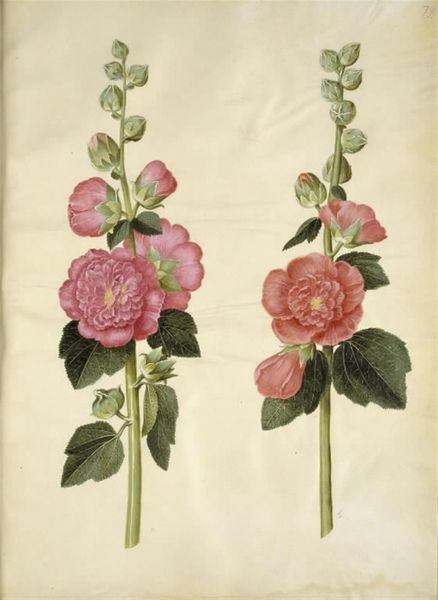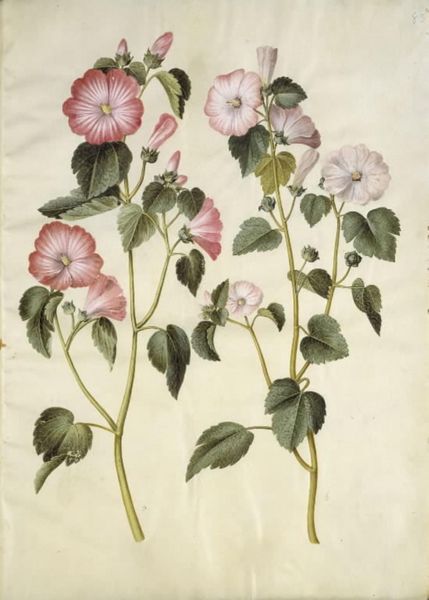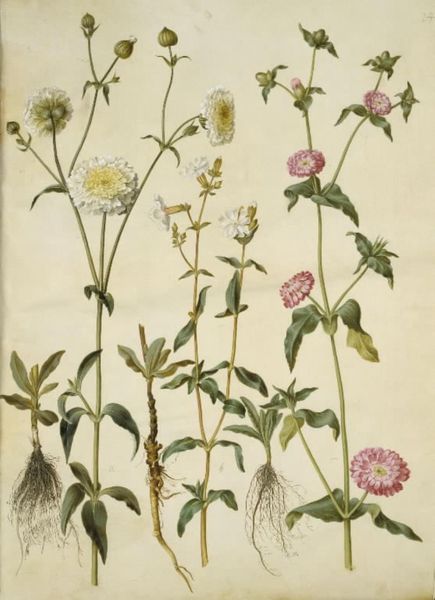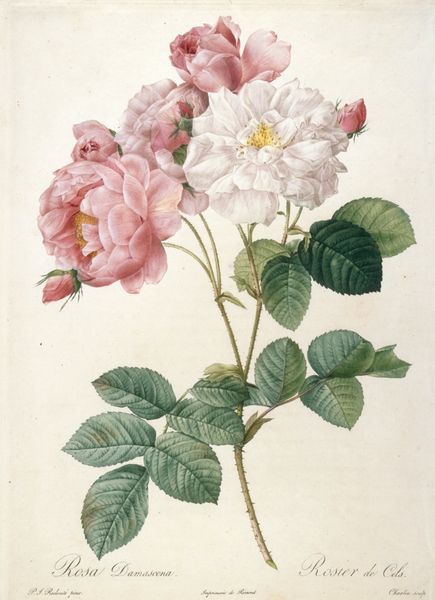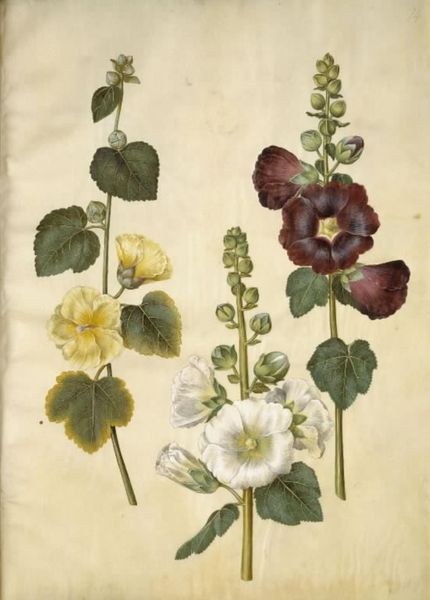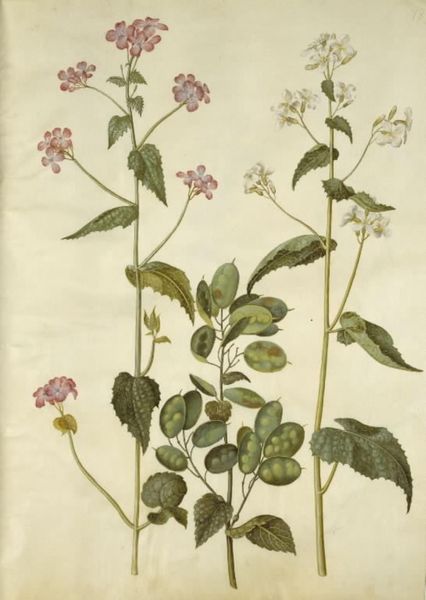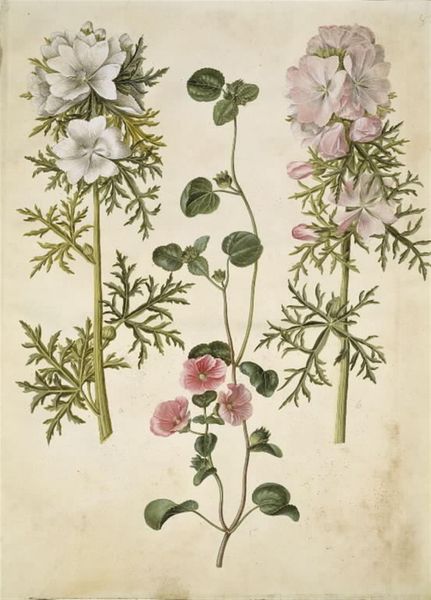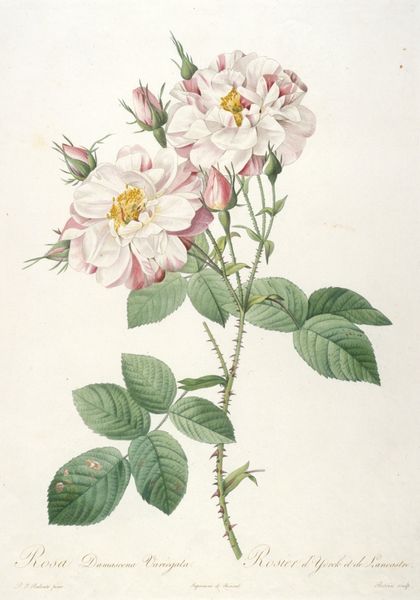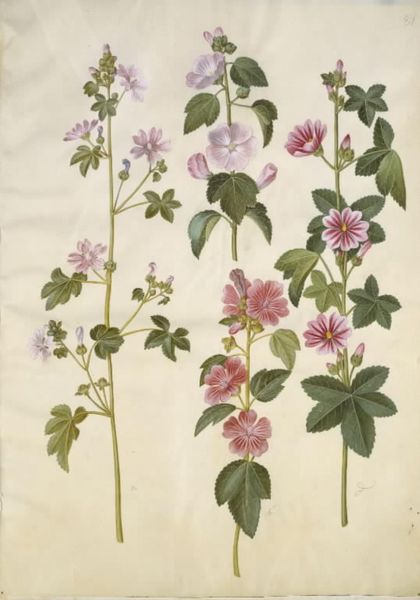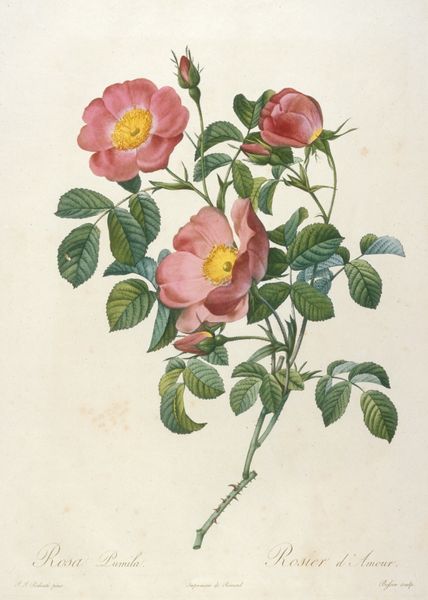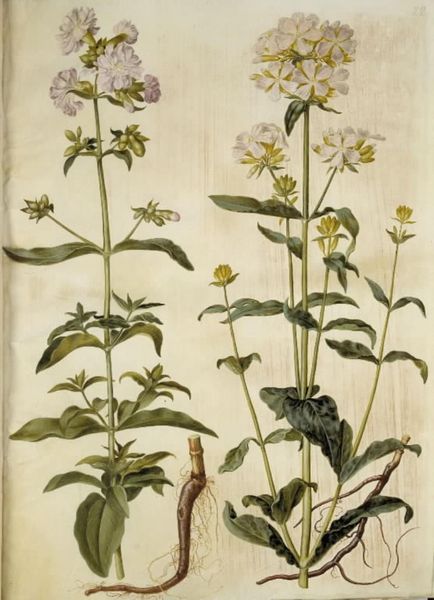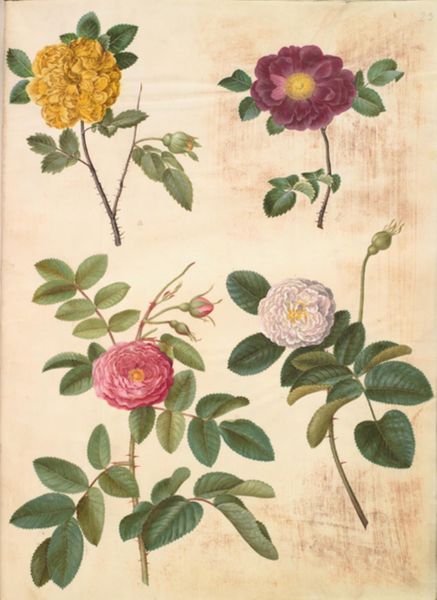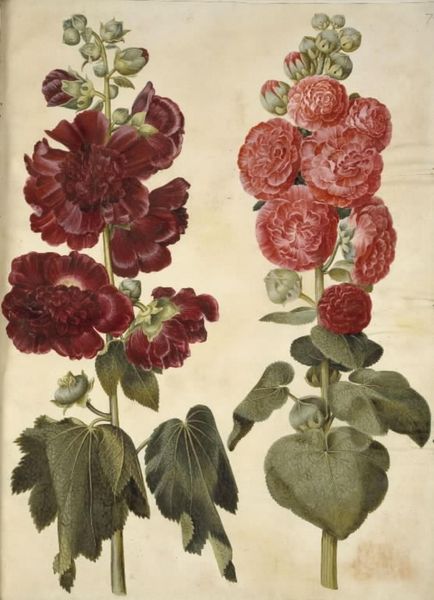
drawing, gouache, watercolor
#
drawing
#
gouache
#
watercolor
#
watercolour illustration
#
watercolor
Dimensions: 505 mm (height) x 385 mm (width) (bladmaal)
Editor: This is "Alcea rosea (have-stokrose)," a botanical drawing made between 1649 and 1659 by Hans Simon Holtzbecker using watercolor and gouache. It has a certain serenity, doesn’t it? Almost like a study in quietude. What can you tell me about this piece? Curator: It’s a beautiful example of botanical illustration from the period. But let's think about what it *doesn't* show us. The precise detail, the isolation of the specimens – it's all about control, about a very specific way of seeing and understanding nature that served particular social and political purposes. Editor: Social and political? Curator: Absolutely. These detailed drawings were often commissioned by wealthy patrons, frequently involved with the spice trade or colonial ventures. How might a seemingly innocuous image of a flower relate to that context? Editor: Well, it… documents plants? Perhaps the patron intended to transplant the flowers for decorative purposes, or cultivate it for medicine or other means? Curator: Precisely. Knowledge was power, especially knowledge of the natural world. These drawings could serve as tools for resource extraction, commodification, and ultimately, control over distant lands and their people. How might the composition itself – the stark white background, the scientific presentation – reinforce this idea? Editor: That’s eye-opening! The white background now makes me think of the colonial process, kind of 'whiting' everything, imposing dominance... I had thought of the composition just in terms of showcasing the flower. Curator: And that initial aesthetic appreciation is valid. But considering the historical context helps us unpack the complex power dynamics embedded within the image, changing how we understand its function. Editor: This gives me a lot to think about regarding the power structures and representation in art. Thanks!
Comments
No comments
Be the first to comment and join the conversation on the ultimate creative platform.
